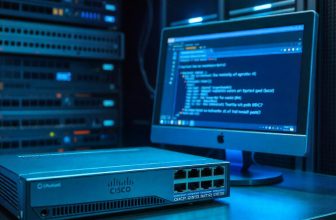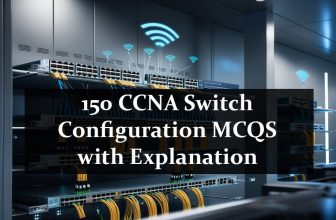
Setting clock rate on a router’s serial interface is required when you want to use a back-to-back WAN connection. When two routers are connected one must supply the clocking for communication with each other. Setting clock rate is important for synchronization as each clock pulse signals the transmission of a bit.
It is important to know the process of setting clock rate on router’s serial interface from CCNA exam perspective and network labs, but in real world almost every network provider delivers clock signal which does not require setting any clock rate on router at the customer end.
Before jumping to the commands for setting clock rate you should know the difference between DTE and DCE. Whenever two routers are connected one will act as DTE and the other will act as DCE, the decision is up to the network engineer to specify each router as DCE OR DTE. Network engineer must know functionality of router’s interfaces as DTE and DCE, it is also very important for cisco ccna students who are preparing for ccna exam.
DTE (Data Terminating Equipment)
DTE equipment are usually owned by customer and are located in customer premises. DTE equipment is responsible for the conversion of information into signals for transmission and also converts the signals when received into user information. Example of DTE devices are computers, routers and bridges.
DCE (Data Circuit Terminating Equipment)
The equipment or a device which performs signal conversion and coding function and located in between the communication line/ communication medium and DTE are known as DCE. The DCE equipment may be an integral part of DTE. Equipment or devices which provide clocking to other devices are known as DCE devices.
Now that you have known the difference between DTE and DCE equipment we will go directly to the commands for setting clock rate on any router.
Set Clock Rate Command:
The clock rate command sets the rate in bits per second on the router that has DCE cable plugged in, the IOS accepts the command, if DTE cable is plugged in, the IOS rejects the command.
Note: In Cisco packet tracer two routers are connected by serial cable and you can set clock rate on any router according to your preference, this way one router will act as DCE and the other as DTE. This should be kept in mind during the lab section of Cisco ccna exam.
UpaaeRouter1#show ip interface brief // check how may interfaces you have, note serial interface numbers Interface IP-Address OK? Method Status Protocol FastEthernet0/0 unassigned YES unset administratively down down FastEthernet0/1 unassigned YES unset administratively down down Serial0/0/0 unassigned YES unset administratively down down Serial0/0/1 unassigned YES unset administratively down down Vlan1 unassigned YES unset administratively down down
We Will apply clock rate on serial 0/0/0 interface of UpaaeRouter1, checking available and supported clock rates for serial 0/0/0 interface
UpaaeRouter1(config)# interface serial 0/0/0 UpaaeRouter1(config-if)#clock rate ? // choose a clock rate from the list below Speed (bits per second) 1200 2400 4800 9600 19200 38400 56000 64000 72000 125000 128000 148000 250000 500000 800000 1000000 1300000 2000000 4000000 <300-4000000> Choose clockrate from list above
Full list of commands for setting clock rate on a serial interface.
UpaaeRouter1> enable UpaaeRouter1# configure terminal UpaaeRouter1(config)# UpaaeRouter1(config)# interface serial 0/0/0 UpaaeRouter1(config-if)# clock rate 64000 UpaaeRouter1(config-if)# end
Verify if clock rate is applied on serial 0/0/0 interface
Show controllers “serial interface number” // this command is used to check if clock rate is applied.
Following will be the output of show controllers serial0/0/0 interface for validating if clock rate is successfully applied. After setting the clock rate on serial 0/0/0 interface when you run show controllers serial0/0/0 command the output will be
UpaaeRouter1#show controllers serial0/0/0 Interface Serial0/0/0 Hardware is PowerQUICC MPC860 No serial cable attached //In case you did not have attached serial cable. //Show controllers serial0/0/0 result when serial cable is connected UpaaeRouter1#show controllers serial0/0/0 Interface Serial0/0/0 Hardware is PowerQUICC MPC860 DCE V.35, clock rate 64000
Note: Students appearing for ccna test should give proper attention to the configuration of serial interfaces as DTE and DCE during the Cisco ccna exam lab.
| CCNA Portable Command Guide | Cisco CCNA in 60 Days |
| CCNA Official Cert Guide Library | CCNA Certification All-in-One |
If you liked this tutorial please do us a favor by sharing this on social media with your friends.







Serial interface on which clock rate is set will always be DCE?
Does we have to set clock rate on each interface which connects to another router?